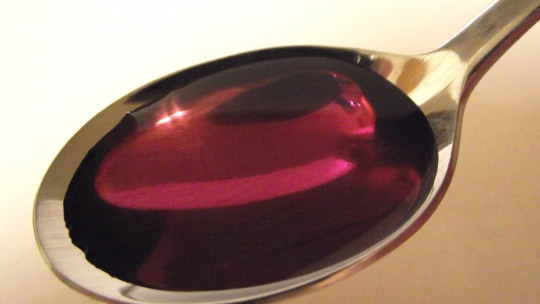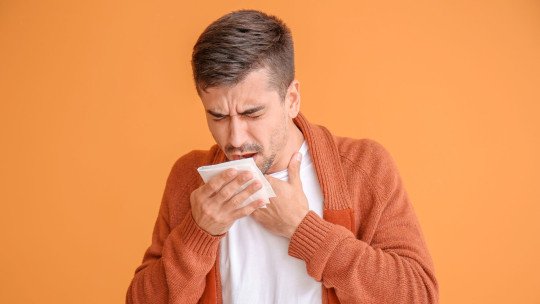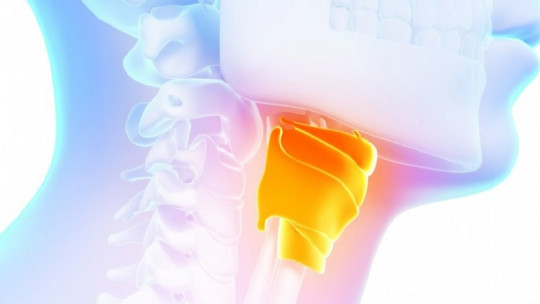
Coughing is a very common reflex action, so much so that we are not even aware of how many times we cough throughout the day. Whether to clear our throat or because we have a bit of phlegm in our neck, human beings cough.
The main function of this action is to eliminate any foreign body that is in our airways, although it is true that, sometimes, we cough even though there is nothing to expel from our throat.
Dry, humid, paroxysmal… There are several the types of cough we can suffer and throughout this article we are going to delve into them and what their possible causes are. Do not miss it!
The 7 types of cough
Coughing is a normal reaction of the body and, in healthy people, it is a mechanism that serves to keep the trachea and bronchi clean
Normally, the cough reflex is caused by the presence of mucus or a foreign body in the airways. It may also be that cough is a symptom associated with diseases of the respiratory system such as asthma, bronchitis or a simple common cold.
Giving a clinical definition, cough can be defined as a sudden, explosive breathing maneuver that occurs to remove a foreign body or bothersome material from the airways Cough consists of three phases:
The cough reflex involves the following process. First, a stimulus, usually a physical or chemical irritant, is picked up by receptors found in the airways. These sensor cells send an impulse to the central nervous system, traveling up the vagus nerve to the medulla oblongata and reaching the pons. From there, A response is sent in the form of another impulse that is directed to the diaphragm and the intercostal and abdominal muscles, causing them to contract sharply
Cough is an involuntary reflex of the body whose function is to keep the airways clear. When you breathe in dust particles, smoke, or breadcrumbs (cough stimuli), sensors in the mucous membranes of the trachea and bronchi become irritated, resulting in the cough reflex. If the cough is bothersome and repeats itself several times throughout the day, you should consult a doctor to know if it is a symptom of a serious illness.

How many types of cough are there?
Now that we know what cough is and what its main function is, we are going to delve deeper into what we have come to explain in this article: the types of cough. There are different kinds of this very human movement and, although In most cases it is not a symptom or cause for concern Yes, sometimes it can be a sign of concern or require treatment.
Cough is especially common during winter, as this is the time when there are the most colds and respiratory infections. The main reason for this is not the cold, which is also true, but rather that people spend more time at home and in the company of other people, being more likely to catch diseases and breathe more dust particles when being in closed spaces. As there are more foreign bodies in our airways in the winter months, we will cough more
The main types of cough are the following seven.
1. Dry or unproductive cough
Dry or unproductive cough It is one in which there is no mucus There is a tickling feeling in the back of the throat that triggers the cough reflex and also clears the throat.
Although the main function of cough is to cough up mucus, in this case there is no excess mucus to expel, which is why it is called a dry cough. It is very annoying because it can produce a constant itchy sensation in the throat.
Normally, this type of cough is caused by inflammation or irritation of the respiratory tract, caused by infections in the upper respiratory tract such as a cold or the flu. In both children and adults It is common for an unproductive cough to last several weeks after you have overcome a cold or flu Other possible causes of dry cough are:
@image(id)
2. Wet or productive cough
As the name suggests, a wet or productive cough produces mucus This type of cough can be caused by a cold or flu, and appears to expel excess mucus in the respiratory system, especially in the throat, nose, lungs and other parts of the respiratory tract. When you have a productive cough, you may feel like something is stuck or dripping in the back of your throat or chest.
This type of cough is the easiest to identify, and tends to disappear once the phlegm has been eliminated It can appear slowly or quickly, and is usually accompanied by other symptoms such as a runny nose, postnasal drip, and fatigue. The duration of the cough can be a clue to the condition causing it:
- Cold or flu
- Pneumonia
- Chronic obstructive pulmonary disease (COPD)
- Emphysema
- Bronchitis, both acute and chronic
- Asthma
Wet coughs that last more than 3 weeks in babies, toddlers, and older children are almost always caused by a cold or flu. In most cases, productive cough is treated with expectorants or mucolytics to facilitate expulsion and in all of them it is usually recommended to drink a lot of liquid, which facilitates expectoration.
3. Paroxysmal cough
Paroxysmal cough causes intermittent attacks of violent, uncontrollable coughing This can be very exhausting and cause pain, causing sufferers to struggle to breathe. In the middle of a paroxysmal cough attack, the affected person may vomit.
One of the main causes of this type of cough is pertussis, also known as whooping cough. It is a bacterial infection that causes violent coughing attacks, causing the lungs to release all the air they have. Then, inhale violently and make a sound similar to a screech.
Babies are the population group that are at highest risk of contracting whooping cough and can have very serious complications, endangering his life. To avoid this condition, it is advisable to vaccinate babies two months and older against whooping cough. As it is a very contagious disease, every family member or person who has been in contact with someone affected by whooping cough should receive treatment.
While whooping cough usually causes paroxysmal coughing, there are other possible causes behind these violent coughing attacks:
- Asthma
- COPD
- Pneumonia
- Tuberculosis
- Suffocation
4. Croup cough
Croup is a viral infection that affects children 5 years old and younger This medical condition causes the upper airways to become irritated and inflamed, making them narrower. Since the airways of children under 5 years old are already very narrow, croup makes it very difficult for them to breathe.
The characteristic cough of croup has a sound similar to that made by seals, also described as a barking cough. Swelling in and around the larynx also causes hoarseness and squeaky noises when breathing
Croup cough can be extremely disturbing for children and parents given the symptoms with which it is accompanied.
- Very difficult breathing
- High-pitched noises when inhaling
- Rapid and anxious breathing
- In severe cases, children turn pale or bluish
5. Psychogenic cough (tics)
Psychogenic or psychosomatic cough It is a type of cough whose cause is not pathogenic, such as a virus or particle in the throat, but caused voluntarily by the individual It’s about that habit of coughing before speaking that some people have or when they are very nervous.
Although it can be used to clear their throat before speaking, it can also be considered a type of tic used to break the ice before starting a conversation or speech.
- Related article: “Nervous tics: types, symptoms, causes and treatments”
6. Acute cough and chronic cough
Regardless of whether it is a dry, wet, paroxysmal or any other type of cough, depending on how long it lasts we can talk about an acute cough and a chronic cough. If it lasts less than 3 weeks we say it is an acute cough while if it lasts more than 4 weeks in children and 8 in adults it could be a case of chronic cough.
7. False dry cough
In false dry cough You cannot expectorate and you accidentally swallow the mucus This type of cough occurs mainly in children and women.
How is cough treated?
When you have too much cough, it is always advisable to make a medical consultation with our trusted professional. Although coughing is something normal and something we do throughout the day without realizing it, the truth is that it also It can be caused by viral infections and other pathogens that require treatment Whatever its cause, general guidelines for cough are as follows.
For dry or non-productive cough
For dry cough, treatment with antitussive drugs which can be of two types.
- Central in action: they inhibit the cough reflex by depressing the cough center. The most used are codeine and dextromethorphan.
- Peripherally acting: they act on the efferent branch of the cough reflex.
For wet or productive cough
In the case of productive cough, expectorants and/or mucolytics are used Mucolytic medications decrease the viscosity of bronchial secretion, making it easier to expel sputum. In the case of expectorants, they stimulate the elimination mechanism, with ciliary movement that drives the secretion towards the pharynx to be eliminated by expectoration or swallowing.
The medication that the doctor will prescribe will depend on factors such as the patient’s age, the type of cough, the associated symptoms or whether other drugs are taken for respiratory tract diseases. The history of diseases such as diabetes, bronchitis, heart disease… Whatever cough medicine is taken, it should not be taken for more than 3 weeks and the doctor must monitor it.








